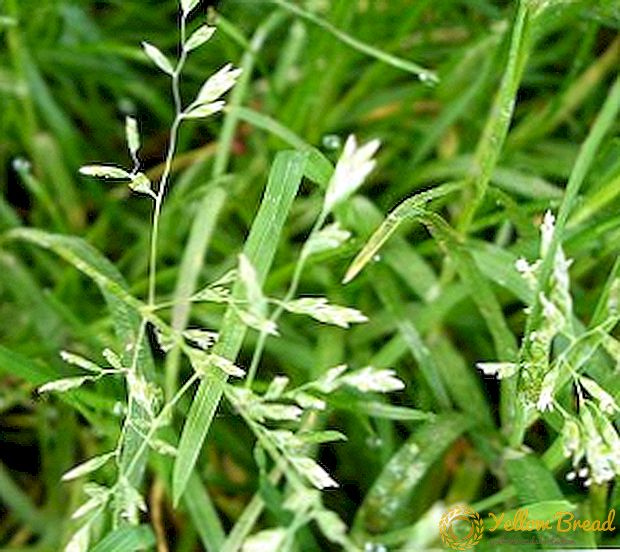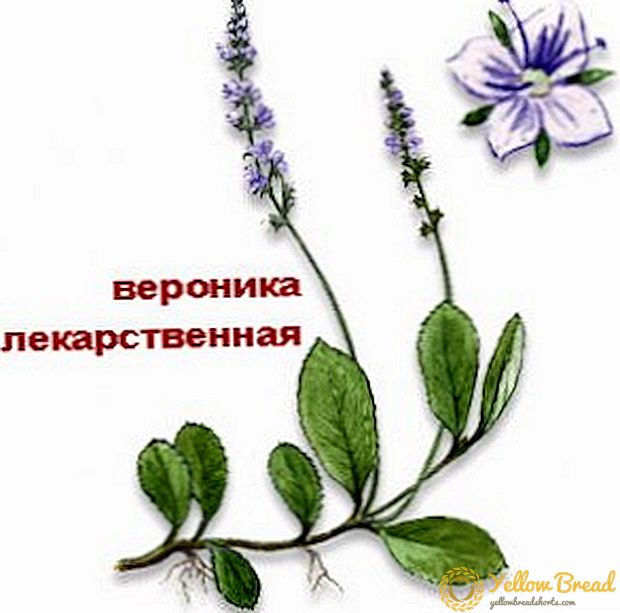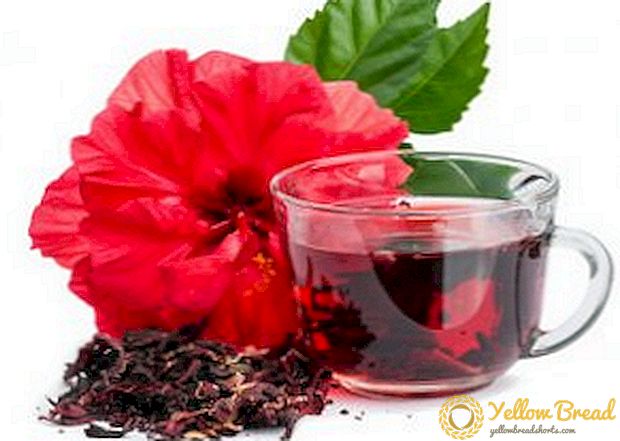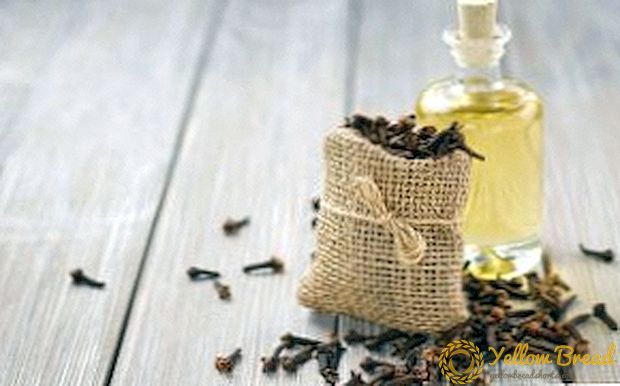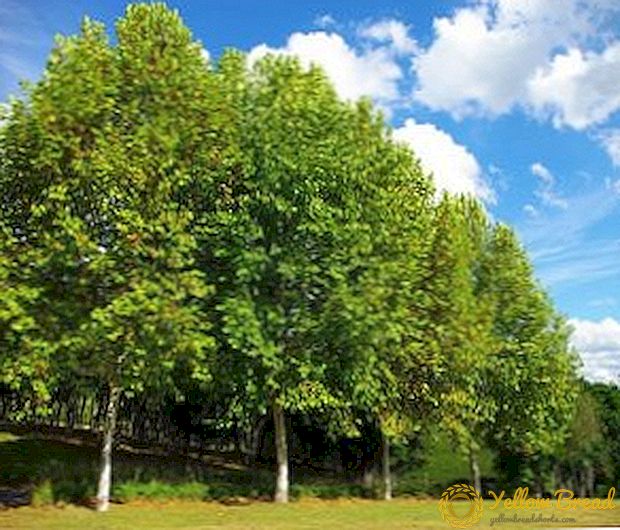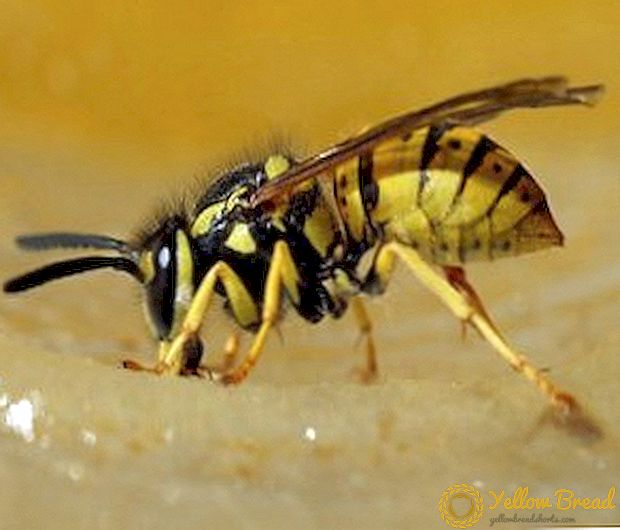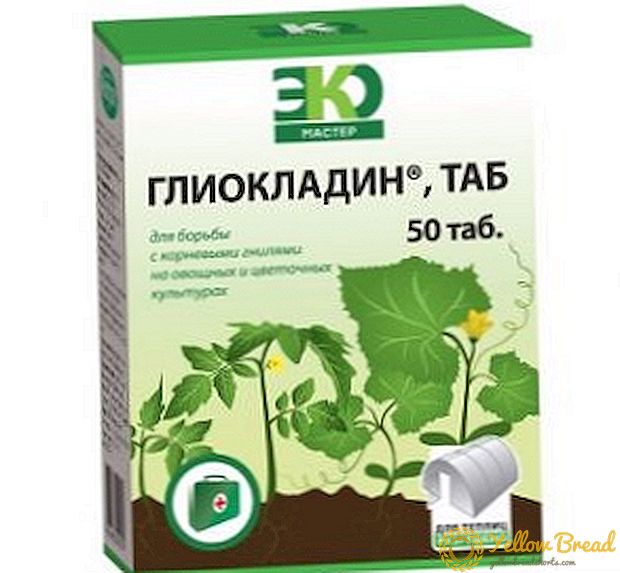 Today, the market offers a variety of drugs against plant fungi. One of the most effective and, as a result, popular is Glyocladin.
Today, the market offers a variety of drugs against plant fungi. One of the most effective and, as a result, popular is Glyocladin.
What is the peculiarity of his actions, how to apply it correctly, we will tell later in the material.
- Detailed description of the biological product
- Action "Gliocladin"
- Instructions for use
- For outdoor plants
- For indoor plants
- Compatibility with other drugs
- Precautions when working with a biological fungicide
- Terms and conditions of storage
Detailed description of the biological product
"Glyocladin" is a microbiological drug aimed at suppressing the development of bacterial and fungal diseases on plants. Belongs to the class of biological pesticides and bacterial fungicides. It can be applied to seedlings of berry bushes, fruit trees, vegetables, garden and house flowers.
The main active ingredient of the product is Trichoderma harzianum VIZR-18 mushroom culture. Depending on the conditions of humidity and temperature, it has an active effect for 3-7 days. After that, the protective effect of the agent is maintained for up to one and a half months if the plants have been treated once.
Produced "Gliokladin" Moscow JSC "Agrobiotechnology".Available in pill form. They can be packed in a blister and folded in two pieces in a cardboard box. Also sold in a jar of 100 pcs. It is also sold in the form of a powder, from which a suspension is prepared for irrigation. 
Action "Gliocladin"
The method of action of fungi means that they penetrate into the sclerotia of a pathogenic fungus, and then gradually dissolve its cells from inside. In other cases, the fungus of the family Trichoderma harzianum encloses a colony of a pathogenic fungus with its hyphae and prevents it from developing further, gradually suppressing it. In this case, trichoderma is not included in the symbiotic relationship with the roots of the plant. It is in the ground as long as it contains carbohydrates.
Glyocladin has many uses. In addition to treatment, it is used to disinfect the soil when planting seedlings at a permanent place or when picking them. The main advantages of the substance are as follows:
- restoration of normal microflora of the soil;
- actively stops the growth of pathogenic fungi;
- economical to use;
- does not linger in plants, when used, you can get a clean crop;
- safe for people, insects, animals.
 Best of all, he fights against putrefactive diseases, such as:
Best of all, he fights against putrefactive diseases, such as:- Alternaria;
- late blight;
- verticillis;
- Fusarium;
- rhizoctoniosis;
- pitiosis
The remedy has the greatest effect on constantly moist open soils, as well as for indoor plants, the soil of which cannot be overdried (azaleas, myrtle). Experienced gardeners and gardeners use two forms of funds: tablets for indoor plants and seedlings, and suspension for large areas on the site. Then the soil does not sour, does not give off an unpleasant smell.
Instructions for use
When buying Glyocladin, it is important to figure out how to use it properly. First of all, you need to remember that it is not used for spraying plants. It is used only for primer. At the same time, it retains its action only in its upper layers, where there is air access. Ideal conditions for it: a depth of no more than 8 cm, temperature + 20-25 ° С, humidity 60-80%, acidity pH 4.5-6. Small deviations from these norms lead to the fact that the growth of fungal mycelium slows down greatly, which inhibits the effect of the drug.
For outdoor plants
 In order to use "Glyocladin" for open ground, the instruction recommends using one tablet of the drug per plant or per 300 ml of water when planting vegetables. If the tool is used for a bush or a sapling, depending on its size, 3-4 tablets are given for a single plant.
In order to use "Glyocladin" for open ground, the instruction recommends using one tablet of the drug per plant or per 300 ml of water when planting vegetables. If the tool is used for a bush or a sapling, depending on its size, 3-4 tablets are given for a single plant.
Due to the insolubility in water, it is believed that the remedy is best used for small garden plants: seedlings, strawberries. On large plants, its action is ineffective in the case of the disease. For them, it can only be used as a preventive measure.
To prepare the solution from the powder take about 50 g of the product per 0.5 l of water, which will be enough to treat a hectare of area.The suspension is poured into a watering tank and used for two hours, until it has lost its properties. After that, the soil is plowed to a depth of 25 cm.
For indoor plants
When transplanting houseplants put one tablet of the drug at the rate of one pot for one plant. However, if the pot is more than 17 cm in diameter, you will need three tablets. If the capacity in diameter is about 20 cm, you need four tablets.
 In the latter case, they should be placed at an equal distance from each other around the root system. In the rest, place as close as possible to the roots of the plant. Remember that tablets should not be immersed deeper than 7 cm in neutral or alkaline soil, keep the pot at a temperature above +25 ° C and below +20 ° C - this retards the growth of the beneficial fungus.
In the latter case, they should be placed at an equal distance from each other around the root system. In the rest, place as close as possible to the roots of the plant. Remember that tablets should not be immersed deeper than 7 cm in neutral or alkaline soil, keep the pot at a temperature above +25 ° C and below +20 ° C - this retards the growth of the beneficial fungus.Compatibility with other drugs
It is categorically impossible to use a drug with chemical fungicides and pesticides, since the latter inhibit the development of trichoderma and even are able to destroy it. After laying the pills from their use should refrain for at least two weeks. Also, you can not use "Gliokladin" with other drugs, except those that contain other strains of this fungus. They can be used only five days after the application of "Gliocladin".  At the same time, it is possible to use "Planriz", which has a bactericidal effect, inhibiting the development of bacterial rot.
At the same time, it is possible to use "Planriz", which has a bactericidal effect, inhibiting the development of bacterial rot.
Precautions when working with a biological fungicide
For people, the drug is low toxic and belongs to the fourth class of danger. Bee toxicity class is third, non-toxic for plants. It can be used near reservoirs for breeding fish.
It can not be transported and kept close to the feed, food, drugs. It is not allowed to use the aviation method. When working with him you must wear gloves, it is forbidden to smoke, eat, drink. Do not use food tableware when using it.Keep out of reach of animals and children.
If the drug was accidentally swallowed, depending on the amount, various reactions may occur: from diarrhea and vomiting to neurotoxic reactions, anaphylactic shock. In such cases, it is recommended to wash the stomach, take activated charcoal and call a doctor. If a part of the drug has entered through the respiratory organs, it is enough to go out into the fresh air and treat the symptoms that may appear. If the drug got on the mucous membranes, it is enough to wash the place with water.
In cases where the drug has crumbled, it is enough to collect it with a broom and throw it in the trash or place it in the ground, diluting it with water. Capacities after using the drug should be treated with a 2% solution of caustic soda, 1% formalin solution or lime milk. You can just throw it in the trash.
Terms and conditions of storage
Keep the tool should also be away from food, drugs, animal feed. It should be a dry room with a temperature not lower than -30 ° С and not higher than +30 ° С. The optimum storage temperature is + 5-15 ° C. Without violation of packaging, the drug retains the effect up to two years
Glyocladin is an effective antifungal agent of biological action. It fights well with a number of fungal diseases, while it is completely non-toxic to plants.

